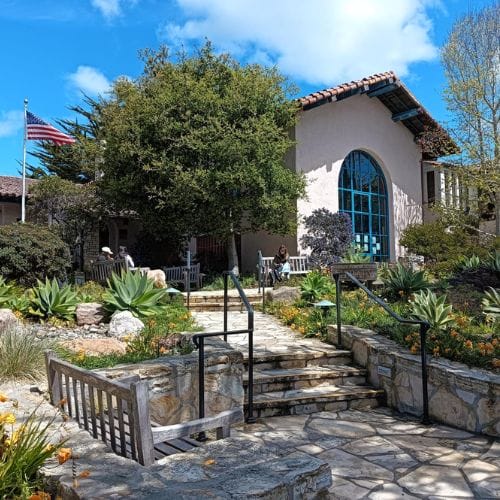
This article was written by Emily from the Upper Fifth (Year 11) as part of the Pioneer, Edition 2. The Pioneer is a magazine packed with lots of exciting and interesting things to do and learn about STEM subjects – Science, Technology, Engineering and Maths; and a little bit about what it’s like to study STEM at Downe House.
The word “Gogotte” is deduced from the French word “Gougoutte”, which means “a drop” or “a small lump”. It refers to a millions-of-years old, naturally solidified sandstone concretion characterised by a pervious texture and a unique, often whimsical shape. It is believed that Gogottes form in sedimentary environments, and it is almost entirely made of silica (which is identical in composition to quartz crystal).
They are predominantly white or light slate, occasionally displaying red or brown tinges due to iron oxides, or black spots from manganese oxides. The finest specimens are found in Fontainebleau, France (one of the most famous and prolific sites for Gogottes), and others have been discovered in Wujiaping, China, Texas, USA and Bekily, Madagascar.
The formation of Gogottes is a complex geological process that involves a combination of factors. A Gogotte is produced when dissolved minerals (such as calcite, aragonite, or silica) are carried by water and deposited around organic materials or other nuclei in sandy or silty sediment. As crystallisation occurs, layers are created. The growth of these layers is not invariant, leading to the development of fluid and convoluted forms.
Moreover, erosion and weathering also contribute significantly to the shaping of Gogottes. Over millions of years, natural forces such as wind, water, and gravity act as agents of erosion which transports sediment from the place of weathering. This process exposes the Gogottes, and therefore wind-blown sand can gradually wear down the surface of Gogottes, developing their textures and patterns.
Consequently, Gogottes have captivated many artists and designers, inspiring them to incorporate elements of these rock formations into decorative ornaments and architecture. The earliest records of Gogottes being used for decorative purposes are at the Palace of Versailles, where they were exhumed by Louis XIV’s workmen and placed around the fountains. However, due to centuries of weathering, they have turned black and are covered in algae.
Nowadays, landscape architects sometimes draw inspiration from Gogottes when designing gardens and buildings. The organic and flowing shapes of Gogottes are occasionally used in the design of sculpture or the curvature of architectural elements.
Although Gogottes hold significant geological importance, providing valuable insights into Earth’s history, they do face numerous conservation challenges due to human activities and natural processes. For example, Gogottes are highly prized by collectors, since their shapes make them desirable for both enthusiasts and commercial sellers.
Most importantly, changes in climate patterns, including increased rainfall or drought, can affect the stability of Gogottes. More erosions occur due to frequent or intense rainfall events that can wear down these formations. Conversely, extended periods of drought can lead to the deterioration of Gogottes due to a lack of natural maintenance through processes like water erosion.
In essence, Gogottes are seen as a testament to the endless prodigies of our earth, captivating scientists, artists, and thinkers across disciplines. Their complicated forms and geological mystifications continue to encourage awe and curiosity, reminding us of the harmonious coexistence that can be achieved, where art and science meet in the grasp of our earth’s remarkable diversity. By protecting Gogottes, we not only conserve a geological heritage but also nurture the creativity they inspire.
Read more from our Downe House pupils...
Tours & Open Mornings
The best way to find out more about Downe House is to experience it for yourself. Book a personal tour or join us at one of our Open Mornings, available throughout the year.
Discover












